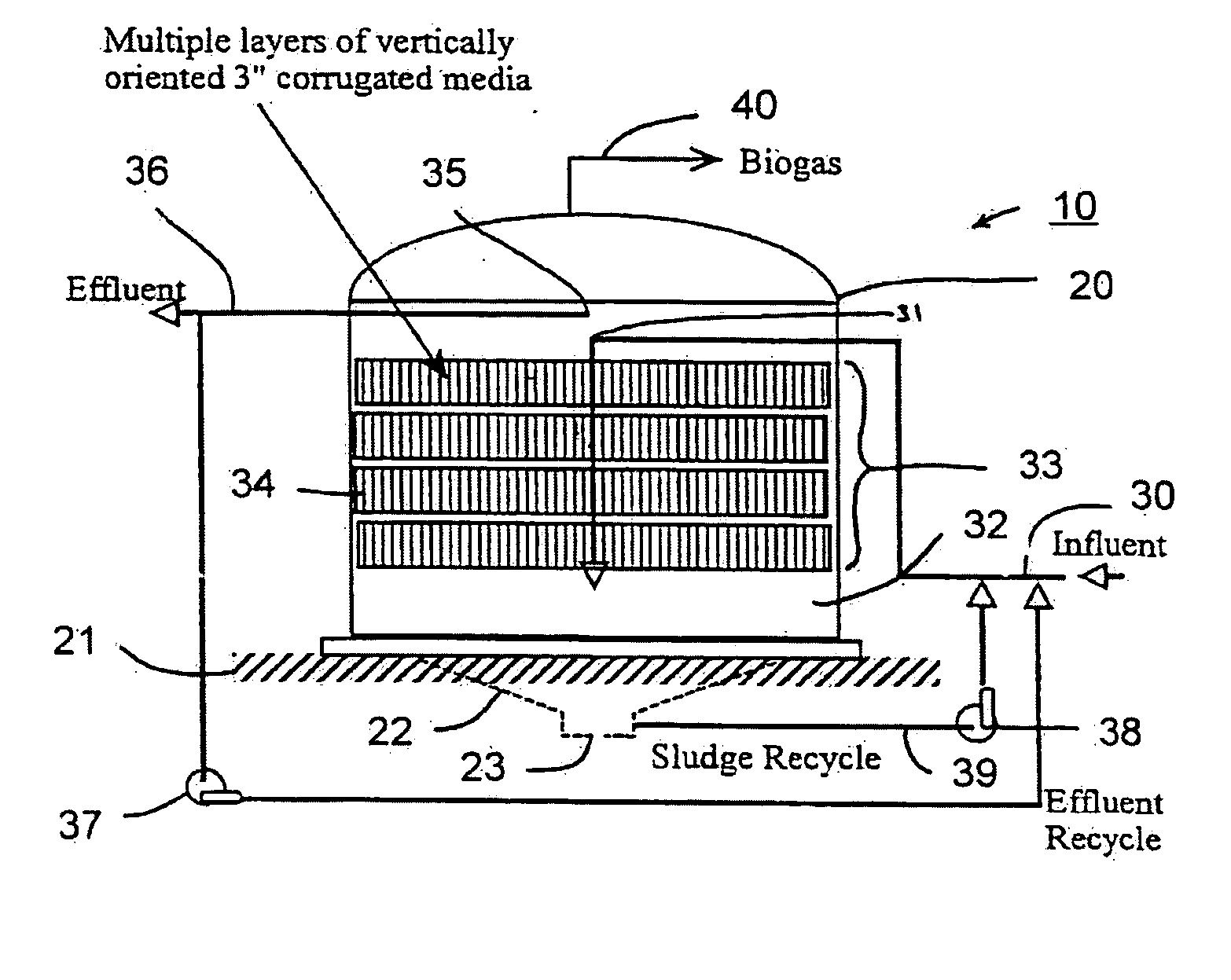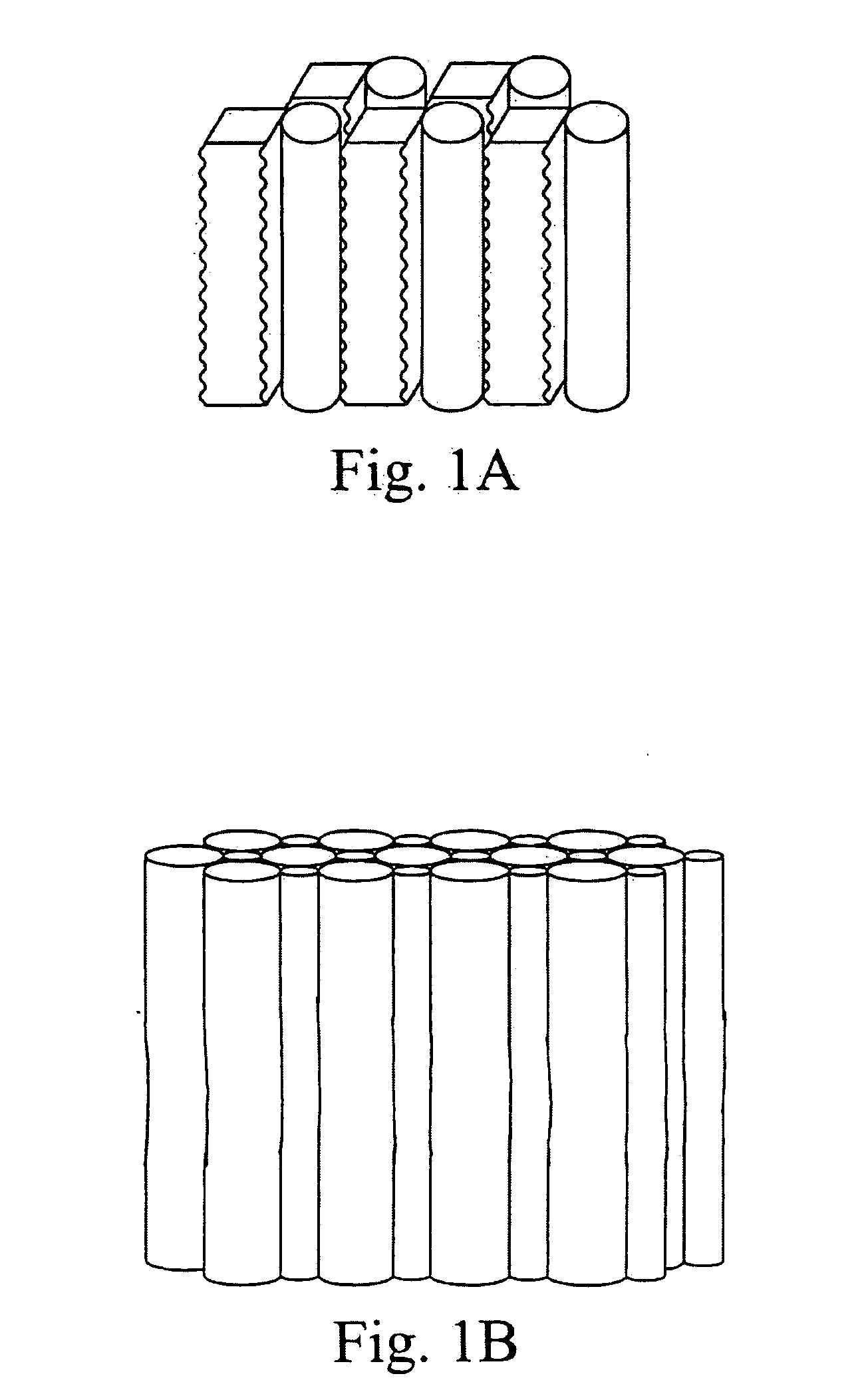Fixed-film anaerobic digestion of flushed waste
anaerobic digestion and flushing technology, applied in the direction of filtration separation, multi-stage water/sewage treatment, and separation processes, can solve the problems of reducing the level of organic waste anaerobic digestion, reducing the efficiency of anaerobic digestion, and reducing the level of pathogen etc., to achieve the effect of reducing the level of pathogens in livestock waste, reducing odors, and reducing the level of pathogens
- Summary
- Abstract
- Description
- Claims
- Application Information
AI Technical Summary
Benefits of technology
Problems solved by technology
Method used
Image
Examples
example 1
[0120] Referring now to FIG. 9, a preferred embodiment of a fixed-film anaerobic digester for treatment of flushed livestock manure is illustrated and generally designated by the reference numeral 10. The basic fixed-film digester design 10 consists of a tank 20 filled with plastic media 34 on which a consortium of bacteria (not shown) attach and grow as a slime layer or biofilm (not shown). The closed digester tank 20 consists of a cylindrical (approximately 1:1 height to diameter), glass-lined bolted-steel tank, but can be constructed of other suitable materials and in other shapes, as commonly understood by those skilled in the art.
[0121] The media 34 in the fixed-film digester is preferably constructed of vertically arranged, 3 in. diameter, corrugated polyethylene drainage pipe, similar to that commonly used in septic tank drain fields. The media is preferably installed in four layers of 4 ft. pipe 33 and occupies approximately 2 / 3 of the tank height. In practice, the media ca...
PUM
| Property | Measurement | Unit |
|---|---|---|
| temperature | aaaaa | aaaaa |
| temperatures | aaaaa | aaaaa |
| particle size | aaaaa | aaaaa |
Abstract
Description
Claims
Application Information
 Login to View More
Login to View More - R&D
- Intellectual Property
- Life Sciences
- Materials
- Tech Scout
- Unparalleled Data Quality
- Higher Quality Content
- 60% Fewer Hallucinations
Browse by: Latest US Patents, China's latest patents, Technical Efficacy Thesaurus, Application Domain, Technology Topic, Popular Technical Reports.
© 2025 PatSnap. All rights reserved.Legal|Privacy policy|Modern Slavery Act Transparency Statement|Sitemap|About US| Contact US: help@patsnap.com



